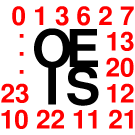Regular readers of this blog probably know that I consider business people to be an elite subset of the population, and that I include small business in this characterization. Even the low-income or insolvent among the self-employed I regard with what can only honestly be called a certain amount of envy. I envy their independence, and I suspect that differences in independence, like differences in social rank, income, wealth and political power, can be the feedstock for hierarchies. Often people associated with family businesses talk (sometimes brag) about having worked long hours at age 7, 8, 9 etc. Sometimes this is presented as a sacrifice, sometimes as a learning experience; almost never as a privilege. Given that calls for privilege-checking are getting a bad rap from those (including some in the left) who like ridiculing political correctness, I’ll back off on any such assertion. I’ll simply say that it would seem such experiences might translate into some social and economic advantages, along with perhaps some possible disadvantages.
The legacy of a family with entrepreneurial roots goes well beyond the family business and other assets, into what must include social capital. At least as common as stories of the accomplishments of people from business families are stories of immigrants who arrived propertyless and pulled themselves up from their bootstraps. One approach to redistribution of family social capital comes from Slapstick by Kurt Vonnegut, basically in the form of a government policy assigning people to extended families. Government policy, of course, is not legitimately part of the anarchist tool-chest, but perhaps there are even better alternatives. The Anarchy and Society blog informs us:
If one’s comrades know whom to contact from other communities, this is valuable information in the search for allies and broader solidarity. Most importantly, anarchist networks are premised upon the free access to information, whether it is mere data, facts, analysis, ideas, or theory. Consequently, anarchists place an emphasis on lowering the cost to information (via free ‘zines, leaflets, internet essay archives, or guerrilla radio programs), the democratic creation of movement analyses (such as with the Independent Media Center model), and mass distribution of news (for example, the A-Infos News Service and accompanying free radio project). To the extent that these information channels permeate every sector of the anarchist movement, the more likely participants will be highly-engaged in important movement debates and theorizing, will have up-to-date understanding of current events and movement activity, and will feel a sense of unity with each other. The quality of information people can acquire in these networks will determine the level of social capital and thus influence the potential of movement personnel’s ability to achieve their goals. Movements can aspire to accomplish their goals by wielding information as a tool to combat ignorance, confusion, censorship, and seclusion.

Leave a Reply